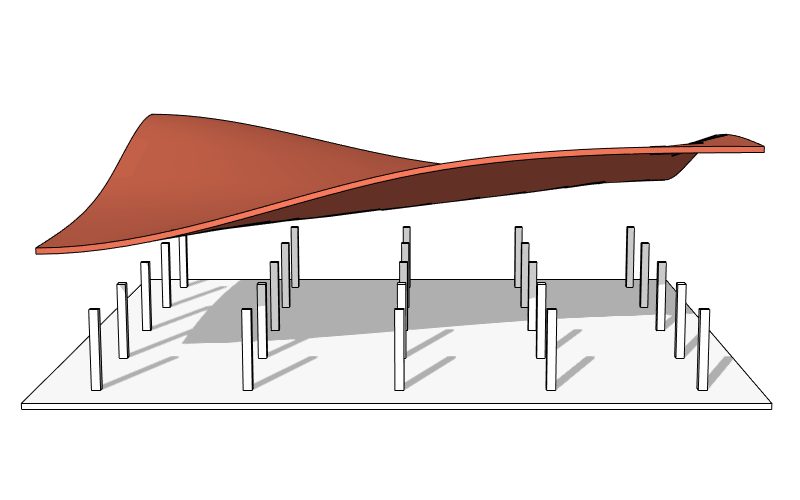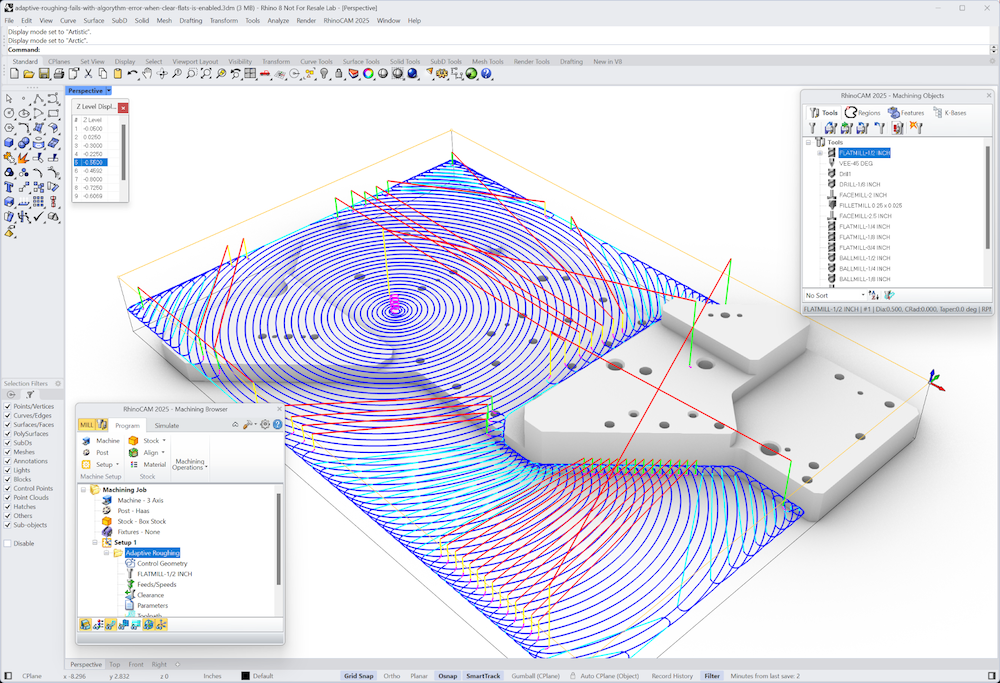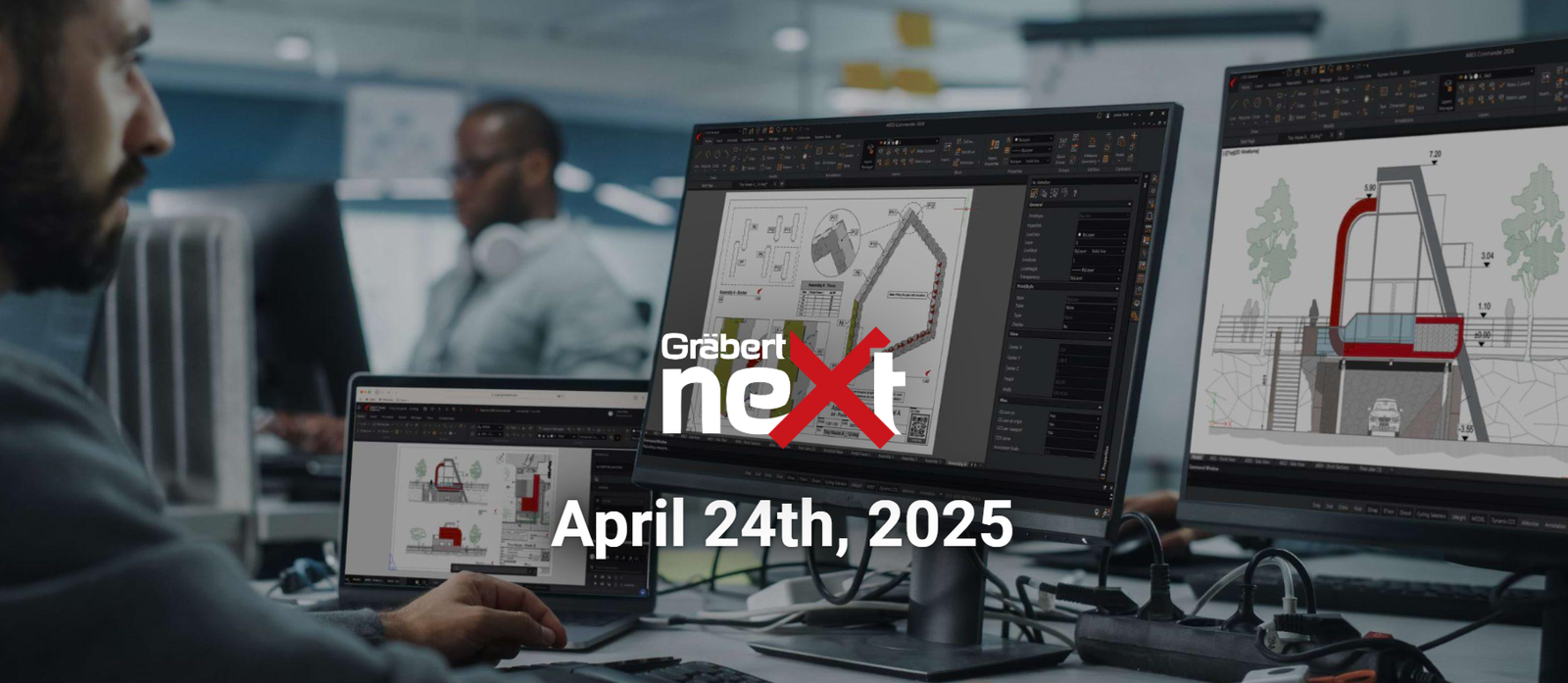Your Cart is Empty
Customer Testimonials
-
"Great customer service. The folks at Novedge were super helpful in navigating a somewhat complicated order including software upgrades and serial numbers in various stages of inactivity. They were friendly and helpful throughout the process.."
Ruben Ruckmark
"Quick & very helpful. We have been using Novedge for years and are very happy with their quick service when we need to make a purchase and excellent support resolving any issues."
Will Woodson
"Scott is the best. He reminds me about subscriptions dates, guides me in the correct direction for updates. He always responds promptly to me. He is literally the reason I continue to work with Novedge and will do so in the future."
Edward Mchugh
"Calvin Lok is “the man”. After my purchase of Sketchup 2021, he called me and provided step-by-step instructions to ease me through difficulties I was having with the setup of my new software."
Mike Borzage
Novedge Webinar #95: Rhino for Jewelry Designers – Q&A with Maia Merav Holtzman
December 12, 2013 8 min read
Maia Merav Holtzman is back with a webinar for jewelry and accessory designers who are already familiar with Rhino: Novedge Webinar #95: Successful Jewelry Modeling in Rhino V5. There were so many questions following her intermediate webinar, that she had to answer some of your questions at a later time. Here are all her answers.
Q: Question from a newbie :-). Are you 3d printing (wax/resin) your models? If so, any tips on water tightening your model in Rhino?
A: I do 3D print my models, generally in wax. I suggest working carefully and checking your joined surfaces with the ShowEdges command as you go. Additionally, you should be looking at the mesh when you do the STL export. I’ll go over this in further detail when I re-record the webinar.
Q: Can we use incremental save instead of copying model into a layer for the sake of a Rhino crash?
A: Yes, although I do both. I like to have the copy in my current file so that I can go back to it for modification and revision as I’m working. It’s a preference.
Q: Can you modify previous Rhino files?
A: If you mean can you open a file and make changes to it, the answer is yes.
Q: Do you only use Rhino for jewelry or do you rely on any plug-ins?
A: I use Rhino primarily, sometimes I use T-Splines if I need to approximate a more mesh-based form of modeling, but rarely.
Q: Come hell or high water I will buy Rhino 5.0 in 2014. What software will work well with jewelry design as an accompaniment?
A: If there’s one software that I recommend, it’s T-Splines, but it’s not a necessity. I’ve heard that the pave tool in RhinoJewel is good, but I haven’t tried it personally. A metal and stone weighing plug-in is a great addition, though I can’t find the link to download the one I’ve used.
Q: Would you be willing to make a study guide for this ring? What about writing a book yourself?
A: I am doing a book, though I’m not sure if it will be online or a hard copy. For this particular project I’m going to create a recorded demo that will document the entire process from start to finish—it will be up in a week.
Q: If I have a drawing or textile art and want to turn it into a filigree ring, how would I transfer the scanned image?
A: If the scanned image is a standard image file and you simply want to trace the graphics, I suggest using the picture frame command. You can also get the curves by converting a raster image to vector in Illustrator, then import the curves into Rhino.
Q: Thanks, wish you could come back to NYC!
A: Thank you! I will let you know when I'm back—I’ll be holding at least one Rhino for Jewelry Designers workshop in NYC in April or May—please email me if you think you’d like to attend!
Q: Are you going to sell this webinar for us to view later on?
A: All Novedge webinars are free and available for viewing on their YouTube and Vimeo channels at any time. : ) Enjoy!
Q: Concerning the "Helpful Modeling Tools" file, does having two instances of Rhino 5 tax the computer system?
A: In my experience it does not, but if your system is at its limit this might present an issue.
Q: Do you build stone shapes yourself or use a plug-in?
A: I have a library of stones that come from other people and plugins, and I modify those stones frequently. Check out 3D Lapidary for free downloadable stones.
Q: Do you typically show tool spread in your models or is that calculated in the lost?
A: Honestly, I’m not familiar with the term tool spread—I even googled it!! I would love to know more about what you’re asking, so please email me! Nonetheless, all elements of the finishing process are accounted for in the material loss calculation. I always suggest speaking to whomever will be milling, printing, casting, and finishing your pieces to get estimates of shrinkage and material loss before you start to model.
Q: How would you plan on smoothing out the edges on the star?
A: Do you mean after the object is printed and cast? I always do a bit of hand finishing of the waxes after they’ve been printed (3M sanding sponges are great—also a bit of orange glow solvent on a Q-tip), then they will be sanded and polished by hand to obtain a super high-quality result. You haven’t seen the finished ring yet, but these stars will basically be free-floating in bombé, so we don’t have the same finishing concerns (tricky edges) as we would if they were simply attached to a surface.
Q: Did you mention keeping the location of the picture on your desktop, or that if you save it and bring it back, it won't show up again. Or did that change?
A: I know what you’re referring to, but in my experience with v5 it is only a problem if you move the original image (for example from your desktop to another file) after you’ve inserted it into the Rhino file.
Q: Is it possible to FlowAlongCurve objects on the surface without any distortion? I mean usually object distorting from poles to poles… thanks.
A: You should try ArrayCrvAlongSrf. It requires you to define the number of objects and/or the distance between them, but it sets the objects at a normal relationship to a curved surface.
Q: How again did you get the two curves that define the inner diameter of the ring? They're curved in toward the center of the ring, I missed how you did that. Thanks!
A: This is the Crv2Views command. You create a closed curve and a path curve to essentially flow that curve onto, then choose both and Rhino redefines the new curve using information from both.
Q: Excellent webinar wish she could finish this ring…
A: Thank you! I will be redoing the entire modeling process—keep an eye out.
Q: In ArtCam you can select a closed vector such as a circle, and turn it into a dome or a cone with a specified height. In Rhino you have to craft a sweep or loft, which is time intensive. Is there a better way?
A: For a cone, you can use the Cone command. For a dome, if you create an Ellipsoid you can define two diametric values plus height in one command, then create a Line from the object’s center Osnap with the Bothsides option toggled to yes and then use the Wirecut command to split the object in two symmetrical closed halves (one of which can be discarded). The thing about this (and ArtCam, I’m assuming) is that the curvature of the dome is defined by the input values. I would rather take some extra steps (draw my own curves and RailRevolve) to get more precise curvature.
Q: What are the nudge keys? When I use the arrow keys, the view port rotates.
A: The arrow keys have two functions: to rotate the CPlane incrementally and to move objects incrementally within the scene. The default Nudge is engaged by holding down Alt and using the arrow keys to reposition objects. If you prefer not to hold down Alt each time, you can adjust your default by accessing the Tools dropdown menu: Tools>Options>ModelingAids>Nudge, and selecting “Arrow Keys” as your default. Note that the nudge can be increased by holding down Shift and decreased by holding down Ctrl.
Q: Is there an easy way to make a domed or beveled shape from a vector as in ArtCam?
A: We can import a vector into Rhino from Illustrator and use it as a curve. Not sure what ArtCam is though.
Q: Is Rhino parametric, like Solidworks, 3Design, or Cryo?
A: Rhino is freeform NURBS modeling. We can use a plugin like Grasshopper to add parametric modeling to the program. Grasshopper is free, and you should definitely download it and start playing around with it.
Q: Why is the top view oval?
A: Probably because the CPlane is slightly rotated in the viewport.
Q: Thanks, I hope you can post the remainder of the procedure on YouTube…I must go now. Thanks.
A: I definitely will. Thanks for attending!
Q: Seeing the smash surface/layout/flow along surface workflow was neat, but why not just slope the star shape to avoid the distortion from projecting?
A: Slopping is not ideal in this scenario. Although you can apply and adjust shapes one by one, you have less control over the modeling and designing process, because you can’t really adjust the relationship among the shapes on the surface after they’ve been applied. If you want to apply individual, complex solid shapes to a surface, however, Slop is sometimes a good tool.
Q: The stars were flowed with rigid, how did you split the surface to use OffsetSrf?
A: I simply used the Trim command. Trim does not necessarily require a true intersection to work.
Q: Is there a shortcut being used to turn the pic frame layer on/off?
A: I’m just turning them off in their layer by clicking on the small light bulb.
Q: How much ram do you suggest is needed to not crush often?
A: The minimum suggested by McNeel is 8GB. I suggest at least that amount, plus a good graphics card.
Q: The diameter of the inner shank is smaller now that an arc has been added. It will no longer fit the size you selected?
A: Actually, it’s not smaller. If you imagine that I were to pass a tube through the center and cut away rounded sections from the ends, then copy the edges of the ends, that is what remains. Same diameter but longer curve length.
Q: Are the ring sizes in your file increased by a particular percentage to account for shrinking that takes place after casting?
A: I scale my models up (to somewhere between 1.03 and 1.05) before I export to account for shrinkage if I am pulling waxes. But usually I just print my waxes in Solidscape and lost wax cast them directly, so no need to account for shrinkage in that case.
Q: Hi I am Ram, Please explain how to hollow ring from inside, I am just learning.
A: Hi Ram, welcome to the Novedge's Rhino community. To make a basic hollow ring shape, check out this mini-tutorial.
Q: Is there a minimum width for small details, such as something like knotwork, taking casting challenges into account?
A: Not so much for printing—with a good 3D printer with a high tolerance you can get really fine details. BUT. Once the piece is cast the cleaning and polishing process can really deteriorate the final result. I tend to want to limit the fine detailing to .6mm. But I think there are people who take it down to .4mm.
Q: How are you rotating the top view like that?
A: Using the Rotate command. It’s in your standard top toolbar (the icon looks like an atomic symbol) or hold down shift and control, then the right mouse button and move your mouse.
Q: Just looking at your cuff project, just curious what renderer do you use for client presentation?
A: I use Brazil as my main rendering engine.
Check out Maia's website for updates on her training classes. And find all the software you need at great prices on our website.
Related articles
Also in NOVEDGE Blog

Enhance Your Designs with VisualARQ 3: Effortless Geometry Extensions for Walls and Columns
April 30, 2025 8 min read
Read More
MecSoft Unveils RhinoCAM 2025 and VisualCAD/CAM 2025 with Enhanced Features
March 08, 2025 5 min read
Read MoreSubscribe
Sign up to get the latest on sales, new releases and more …






